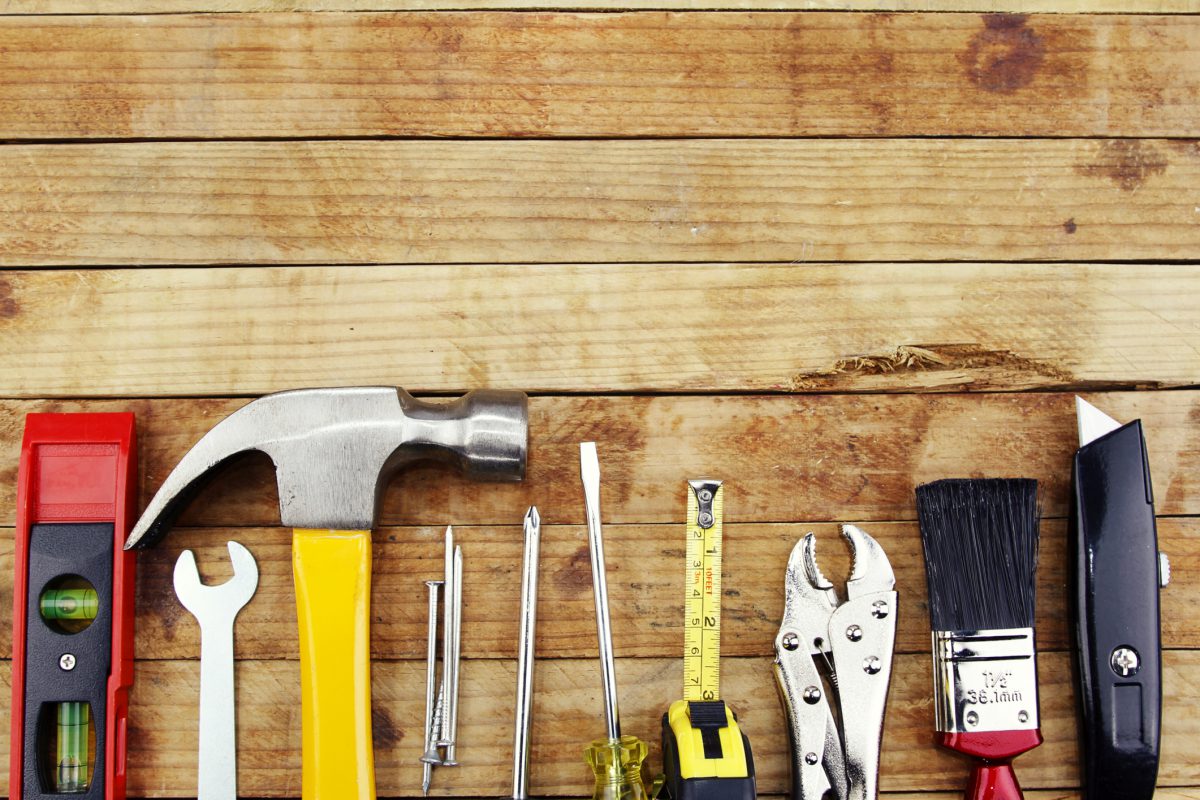Buying a home is exciting and scary. Home maintenance doesn’t have to be hard. Learn what tools you need, how to find the circuit breaker or to shut off the water.
Maintenance Tips for First Time Homeowners
Owning your first house is exciting! You can build a killer deck or paint the walls purple on a whim. When it comes to renovations and personalizing your new home, however, you may find yourself stuck trying to figure out where to begin. The solution to this quandary is quite simple. Before you fire up the cordless drill or contemplate knocking down walls, you’ll want to take care of a few preventative home maintenance tasks first. Home maintenance can be daunting for new homeowners if you’re used to calling a landlord to come fix your problems. But stick to this list of maintenance tips for new homeowners to make sure your bases are covered.
Call 811 Before You Dig
Whether you’re planting shrubs or building a new fence, you need to be sure you won’t hit any utilities when you break ground. Call 811, the national dig-safely hotline. They’ll send the utility companies out to mark the locations of underground pipes, wires and cables. Not only will you avoid expensive repairs and neighborhood-wide cable outages with 811’s help, but you’ll also ensure that any work you do on your property will be conducted under much safer conditions.
Hire A Professional To Trim Your Trees
Remove dead branches or limbs that could fall on your roof or overhead power lines. This is also a great opportunity to check the integrity of your gutters, soffits, eaves and roof vents. Because huge limbs can break and fall unpredictably, leave tree trimming to the pros.
Find Your Circuit Breaker Box
While you’re searching your closets, basement, garage and front and back yards for your main water shut off valve, be on the lookout for your circuit breaker box. Once you’ve identified it, determine which fuses control the electricity in various areas of your house and label them accordingly.
Check Your Attic Insulation
If your attic inspection reveals that the tops of your floor joists are visible, then your home is insufficiently insulated. The recommended amount of insulation for most attics is about 10 to 14 inches of material, depending on the type of insulation used. The attic is the easiest place to add insulation to improve your home’s energy efficiency. A well-insulated house can save you up to 30 percent on your energy bills, increase your property value and keep your family a lot more comfortable.
Locate Your Main Water Shut Off Valve
Gallons of water rushing out of a burst pipe can wreak havoc on your drywall, flooring and belongings. In fact, non-weather-related water damage is the second most common homeowner’s insurance claim, according to one company’s claims history. So you need to be able to cut off the flow of water into your home quickly in case of an emergency.
Find your water shut off valve. This is where the water main enters your house. It’s often — but not always — located near a street or alleyway. Next, be sure you know how to close it. You may need to purchase a special tool, such as a crescent wrench or “curb stop key”, both to access and actually turn the valve.
Check Your Foundation
If rain and melting snow drench the soil around the base of your home, pressure can build up and inflict structural damage on your foundation. Worse, if a leak springs and water comes into direct contact with your home’s foundation, it can expand any existing cracks and cause expensive problems. To prevent the weakening of your foundation, be sure the ground around your foundation slopes away from your house at least 6 inches over 10 feet. Be sure your gutters are clean and draining properly. Finally, caulk any small cracks in your foundation walls before they have a chance to becomes big deals.
Proceed Cautiously When Drilling Into Walls
Plumbing pipes, ductwork, wires and cables are hidden in most homes. Before you power up your drill, use a battery-operated stud sensor to detect studs, cables, ducts and the other vital veins and arteries running just beneath the surface of your walls. Since stud sensors aren’t always 100% accurate, avoid damage by drilling only 1 and one-fourth inches deep – just enough to clear the drywall and plaster but miss most wiring and pipes.
By following these first-time homeowner tips, you can protect your investment. You can increase that level of protection, and help reduce major costs associated with repairs and replacements in your home.
